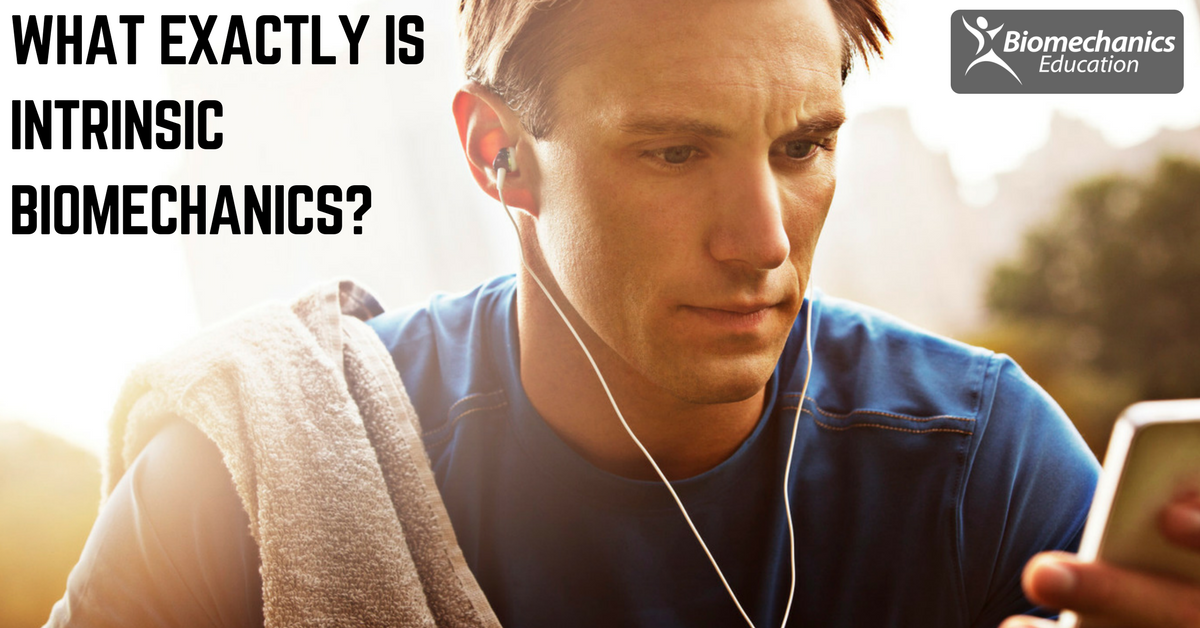



At Biomechanics Education, we often encounter questions about the type of biomechanics we specialise in. This blog aims to clarify this by defining key terms and concepts related to our field.
The study of the mechanical laws relating to the movement or structure of living organisms.
Biomechanics:
The study of mechanical laws relating to the movement or structure of living organisms.
Extrinsic Biomechanics:
This involves analysing movement performance using advanced machinery like isokinetics and kinematics to understand forces, loads, and levers. Practically, it includes observing and correcting client movements using verbal and visual cues.

Intrinsic Biomechanics:
This focuses on understanding the internal neuro-musculoskeletal system, which creates external movements. It examines what happens inside the body to produce the movements we see externally. 
The iMoveFreely® programme is a system of low-intensity exercises designed to prepare the body for movement, reduce injury risk, and enhance performance. Initially exclusive to high-level athletes, it is now recognised as fundamental for anyone seeking to move more freely. The programme consists of three phases:

This phase addresses the interconnectedness of muscles, joints, and nerves with techniques that:

The goal is to restore capacity around the pelvis, spine, and shoulders, ensuring they move freely and correctly.
Building on the first phase, this stage focuses on:
Using a three-step approach based on research by Haines, McGill, Matthews, and Cholwewicki to stabilize and control the pelvis, spine, and shoulders. This phase prepares clients for more advanced movements, promoting overall stability and control.

The final phase strengthens key areas like the pelvis, shoulders, knees, and feet. It involves:

This is an 6-8-month diploma with 4-6 days face to face, a 1hr practical assessment and home study, open to level 3 exercise professionals and above including therapists and coaches with an equivalent level of anatomy knowledge and exercise prescription skills. There are a total of 42 manual and visual assessments based on over 20yrs of research comparing them to isokinetic results for accuracy. BC’s are encouraged and reputed, to have a high level of inter-professional language skills giving them the ability to cross both exercise and therapy worlds while maintaining their professional scope of practice.
An organisation offering education, support, networking opportunities and encouragement of inter-professional relationships between exercise professionals, sports coaches, therapists, clinicians, podiatrists and any professional working one to one or in group exercise. It is also for those interested in learning and sharing anything that helps us all improve health, function and fitness while reducing injury risk in our clients. The IBA runs 6 annual Discovery Day workshops/webinars that are open to both members (free) and non-members who will pay a small access fee.
An individual trained to deliver the intrinsic biomechanics education programmes through a licensed Education Provider. Open to BC’s demonstrating teaching and communication skills while pro-actively promoting intrinsic biomechanics education and skills.
Would you like to be part of this fast-growing, highly reputed group of practitioners contributing to improving movement, reducing discomfort, and lowering injury risk?
YES? CLICK HERE
By joining, you’ll gain access to a network of professionals and the latest biomechanics education to enhance your practice and client outcomes.